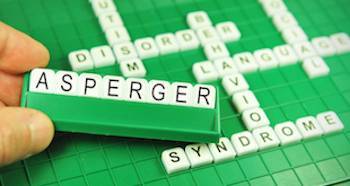
Adults with Autism Spectrum Disorder sometimes feel a certain pressure, from friends, relatives, societal norms, or other sources, to think, feel and act neurotypically, that is to be like everyone else. But from the perspective of someone on the spectrum, what does it mean to be normal? A recently published study describes three commonly held narratives of neurotypicality among adults with ASD.
An Achievement
Some people consider neurotypically as a goal they strive to achieve. It is a goal requiring considerable commitment and effort, at times a painful struggle, often at the cost of renouncing an identity people have lived with for many years. The struggle involves “bettering” oneself, reaching beyond one’s comfort zone, in the effort to undo the undesirable challenges of ASD.
The idea of normality as an achievement involves a conscious effort to appear and behave neurotypically, a process that is effortful, time-consuming, sometimes painful, and not always successful. It requires having an understanding of neurotypicality as attainable through direct, sustained effort, which can come with a high emotional and social price. Depression, disorientation, and burnout are not uncommon. What comes naturally to a person on the spectrum, for example stimming, pursuing narrow interests, and masking, are disavowed, leading at times to isolation and other negative feelings.
Yet, for many on the spectrum, these are costs worth bearing, as the traditional measures of being normal, such as fitting in and being more social, make it worth the effort. In many cases, becoming normal is an act of bettering oneself, an accomplishment worth feeling proud of, and one whose benefits significantly outweigh the costs.
A Masquerade
While some adults on the spectrum see neurotypicality as something they can achieve, others see it as a performance they engage in throughout their lives, much like performing a role in an ongoing play. This involves a clear distinction between being a neurotypical person and acting like one. The effort to be normal does not make one that way, because people don’t just lose their autistic selves, they instead learn how to hide and control them.
This effort to hide involves an explicit and conscious intent to look and behave neurotypically, all the while knowing it is an appearance. There are some adults who manage this appearance rather successfully through discipline and perseverance. They find the effort satisfying and worthwhile, given how valuable appearing normal is to them. Others find this effort to be a different person stressful, exhausting, and emotionally draining. leading to isolation and other negative impacts on their daily lives.
A Curse
For adults with high-functioning autism, a common experience is that of being perceived as normal. They look normal, sound normal, have normal interests, and exhibit all the characteristics that normal people exhibit, except they are not normal. For them, neurotypicality is a burden to uphold. Expectations are placed on them to be “normal” all the time, expectations that are impossible to uphold given the fact that they are on the spectrum.
Typically, these people feel as though they are constantly failing to be what they are expected to be, not due to unreasonable expectations but because they appear to those around them completely normal.
Unlike those on the spectrum who try to be normal or those who masquerade as normal, adults who see neurotypicality as a curse often overlook the fact that they are on the spectrum, believing as do others, that they are perfectly normal, only to rediscover over and over that they are in fact not normal. Time and again they recognize the fact that they can’t always behave neurotypically despite trying. The comments of one subject in the study summarize this dilemma perfectly:
I couldn't change who I was. I couldn't make myself more functional than I was. I was what I was. But I tried! I always tried.
Implications
The results of this study suggest three indications for those who wish to support adults on the spectrum. One is to offer alternative narratives of neurotypicality, ones that are more adaptive to the person’s current views of what is normal. A second is to suggest goals that lead to greater satisfaction and well-being as determined by the autistic person. The third is to pay attention to the stress a person is experiencing trying to be neurotypical and the costs those efforts entail.
In each of these three suggestions go a long way towards helping adults on the spectrum achieve the normality in their lives that are worth striving for.




